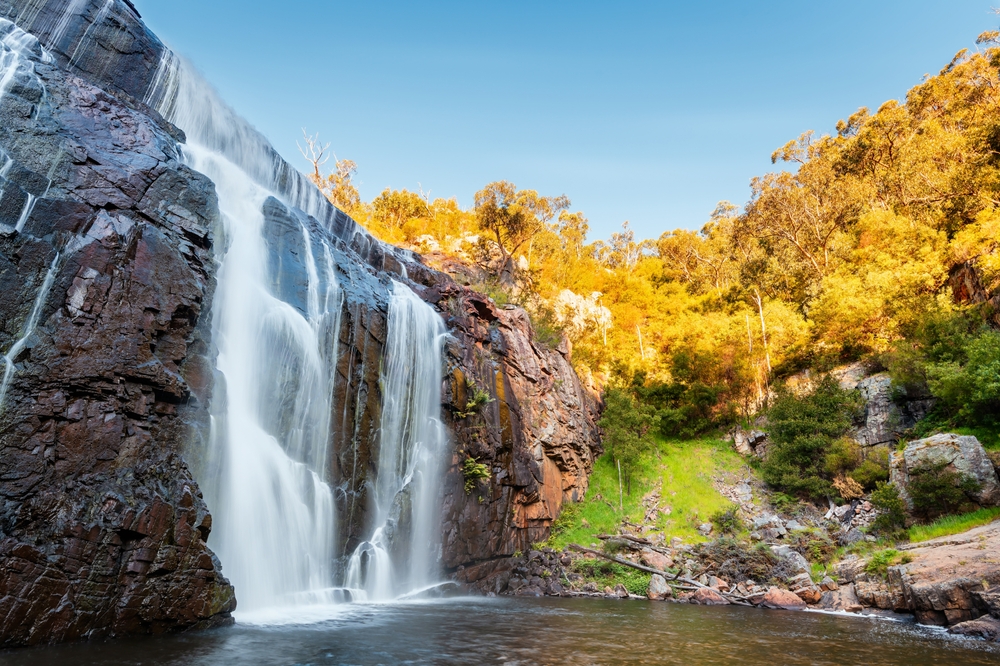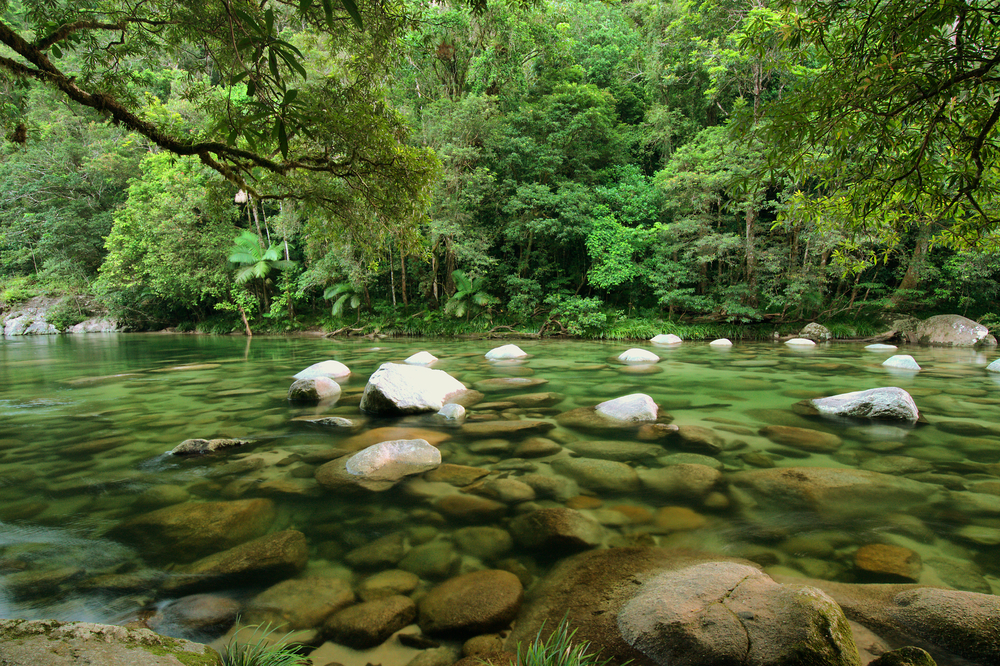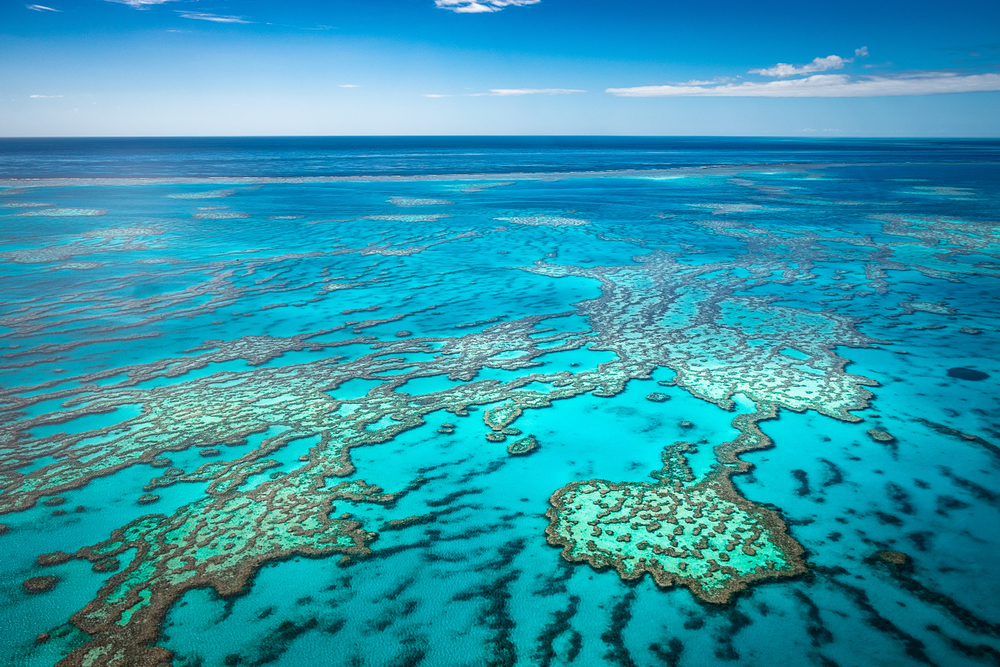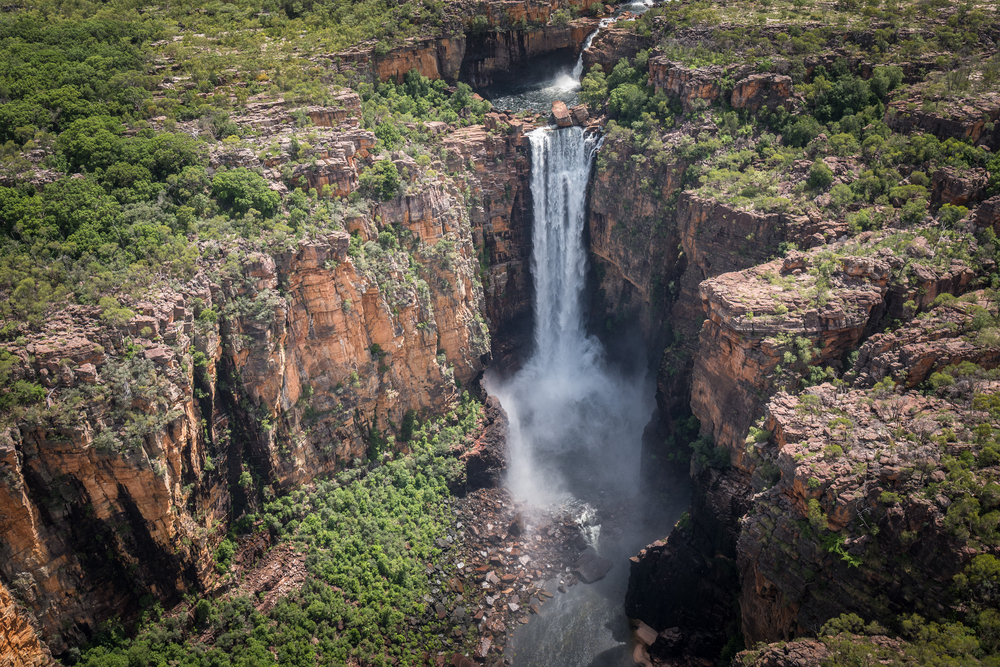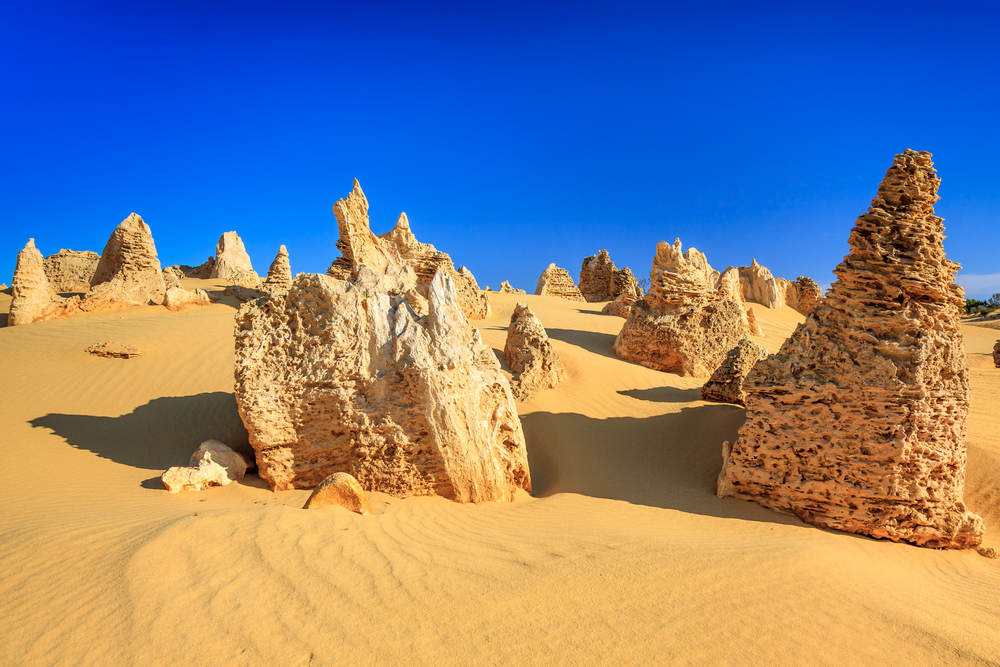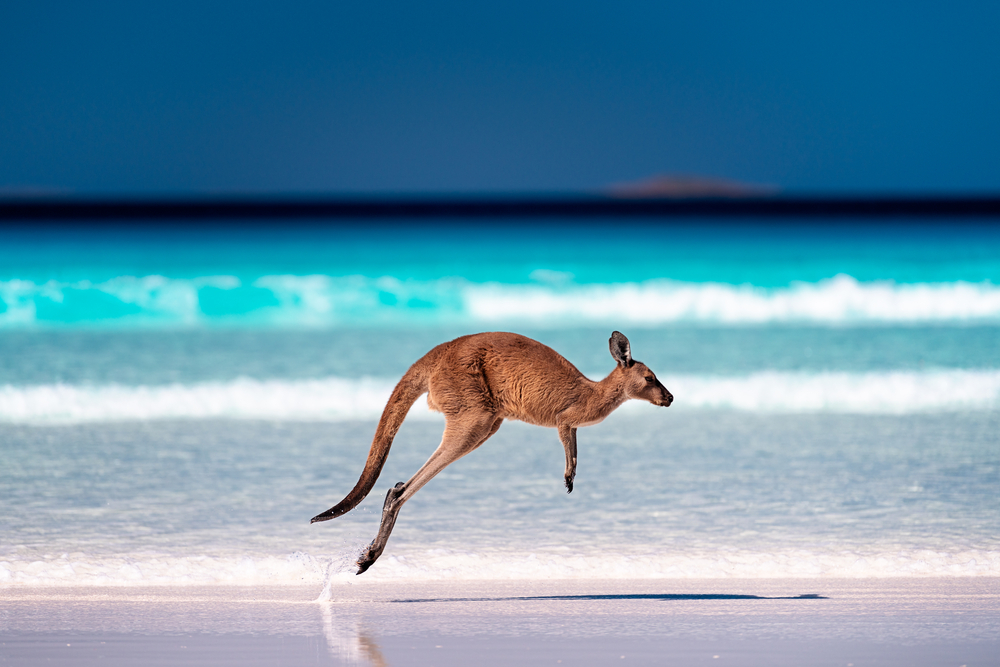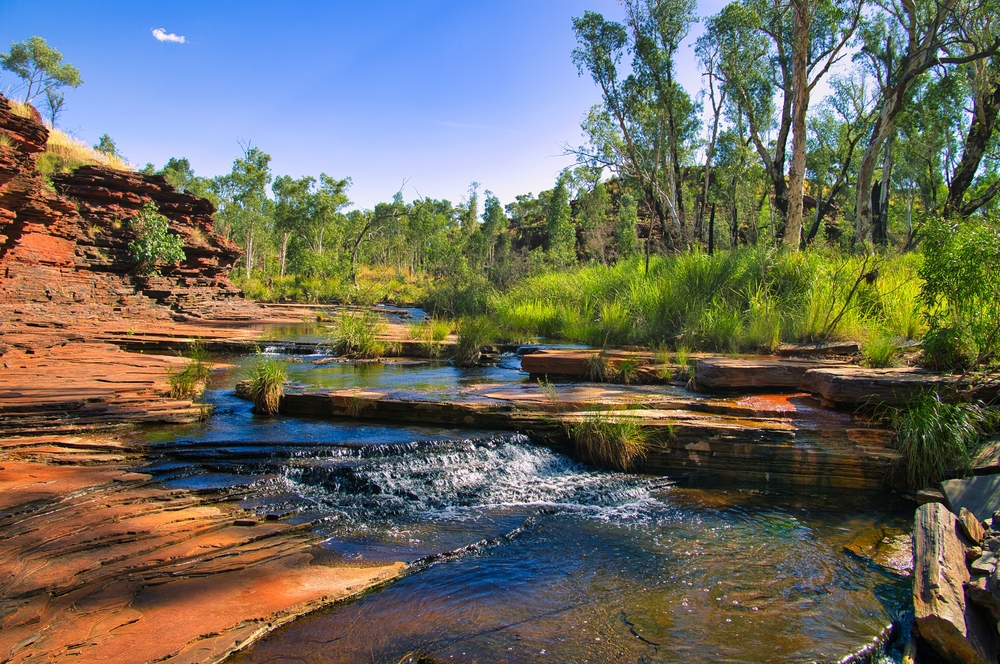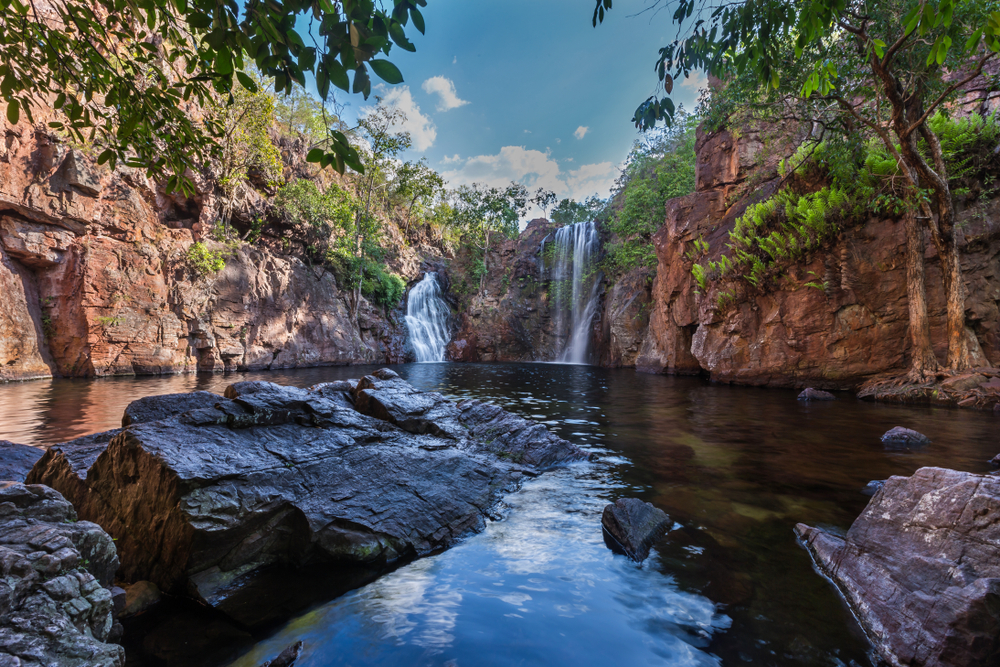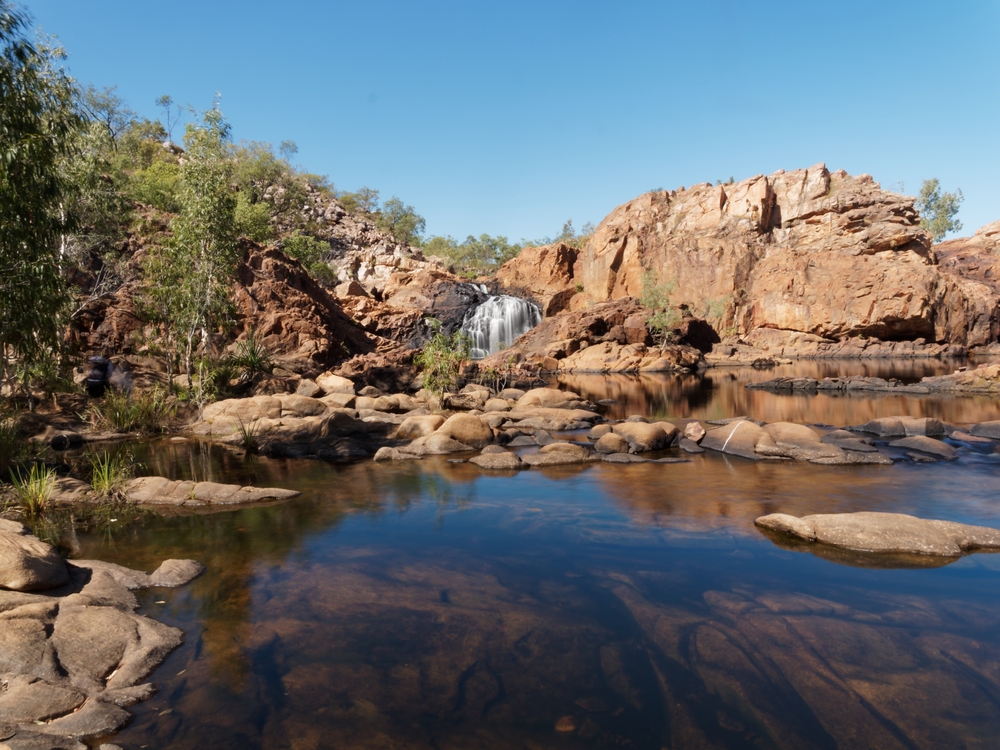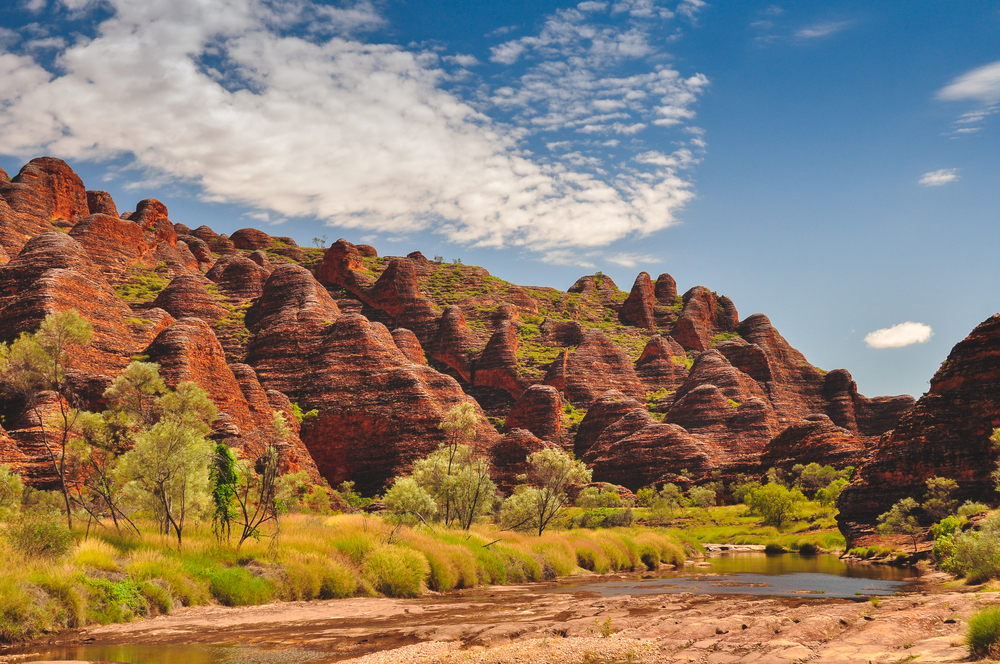Grampians Overview
Grampians National Park, known as Gariwerd in the local Jardwadjali language, is a stunning natural reserve in Victoria, Australia.
Spanning approximately 646 square miles (1,673 square kilometers), the park is renowned for its rugged mountain ranges, dramatic sandstone cliffs, and vast forests. Located about 160 miles (260 kilometers) west of Melbourne, the park is a cherished site for both its natural beauty and deep Indigenous cultural significance.
The Grampians rise abruptly from the surrounding plains, with their highest peak, Mount William, standing at 3,829 feet (1,167 meters). The region features a network of striking escarpments, deep gorges, and picturesque waterfalls, including MacKenzie Falls, which is among the most visited sites.
The landscape is further characterized by dense eucalyptus forests, fern-filled gullies, and seasonal wildflower displays that bring vibrant color to the terrain.
Wildlife is abundant within Grampians National Park, offering visitors a chance to encounter a variety of native Australian species. Among the most commonly seen mammals are eastern grey kangaroos, swamp wallabies, and emus, often spotted along trails or in open grasslands.
The park is also home to echidnas and sugar gliders, along with a diverse range of bird species. Birdwatchers can spot the endangered red-tailed black cockatoo, superb fairy-wrens, wedge-tailed eagles, and numerous species of honeyeaters. Reptiles such as bearded dragons and shingleback lizards can often be seen basking in the sun, while at night, possums and owls emerge from the dense tree cover.
One of the most popular features of the park is the series of breathtaking lookouts, including the Pinnacle, which offers sweeping views over Halls Gap and the surrounding ranges. Other well-known vantage points include Reed Lookout and Boroka Lookout, both of which provide dramatic panoramas of the rugged landscape.
The Balconies, a rock formation resembling a set of stone windows, is another must-see location. MacKenzie Falls remains a favorite among visitors, with its year-round cascading waters creating a refreshing retreat.
The park also holds significant Indigenous rock art sites, with well-preserved paintings at places such as Bunjil’s Shelter and Gulgurn Manja Shelter, providing insight into the cultural history of the region’s traditional custodians.
Visitors to the Grampians can engage with the park in numerous ways. Hiking is one of the most popular activities, with trails ranging from short walks to multi-day treks. The Grampians Peaks Trail offers a challenging but rewarding experience for those looking to explore the park’s diverse terrain. Rock climbing and abseiling are also highly popular, particularly around Mount Arapiles and the Wonderland Range.
Wildlife viewing and photography are frequent pursuits, while camping under the stars allows for an immersive experience in the park’s serene environment. During spring, the wildflower season draws nature enthusiasts keen to witness the park’s spectacular floral displays.
Grampians National Park faces ongoing conservation challenges, particularly related to bushfires, invasive species, and the impacts of tourism. The park has seen significant bushfire events, which have shaped its landscape and necessitated extensive recovery efforts.
Conservation initiatives focus on protecting endangered species, restoring native vegetation, and managing visitor impact. Successes include the preservation of critical habitats for rare wildlife and the engagement of Indigenous communities in land management practices.
Sustainable tourism efforts continue to balance environmental protection with visitor enjoyment, ensuring the park remains a treasured destination for future generations.








































































